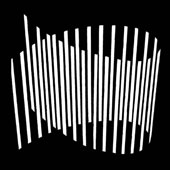Design Course
Elements of 2 Dimensional Design
Basics for a Visual Artis
by
Definition:
A line is the connection of two or more dots that are so close that cannot be individually recognized. It is created by the continuous movement of dots.
• It is one of the basic and most commonly used design elements.
• Line consists of one dimension; every line has length and thickness.
• An important quality of line is direction; it guides the eye from one end to the other.
• It is an expressive tool and describes shape.
• The human eye is very sensitive to lines, real or imaginary. Therefore, in graphic design the use of line helps to lead the viewer’s eye towards what you want them to see.
• Line can create shapes and divide space.
Types/ Categories of lines:
• Actual Lines:
These may vary greatly in weight, character and other qualities. It often defines shapes.
• Implied Lines:
These are created by positioning a series of points so that the eye tends automatically connect them. Example: Dotted lines
• Psychic Lines:
This is an imaginary line that is connected by two visual elements. Such lines create tension and draw more attention. These psychic lines are very powerful and can be difficult to minimize if they are distracting. Example: Words
Physicality of Lines/ Line Types:
• Geometrical: Straight, Angular, Kinked (Zigzag) and Circular
• Organic : Curvilinear, Free flowing
Direction of Lines:
• Vertical : Denotes the Potential Motion (Activity)
• Horizontal: Denote simply stability (Rest, Stable)
• Diagonal : Signify dynamic motion and depth (Motion, Dynamism and Depth)
Qualities of Line:
• Visual and
• Expressive
Line quality refers to how the line is drawn. It communicates emotion and the state of mind through its character and direction.
- Smooth / Rough / Uneven
- Thick / Thin
- Sharp / Blur
- Bold / Delicate
- Strong / Weak / Shaky
- Regular / Changing
Reference:
Students Work:

















